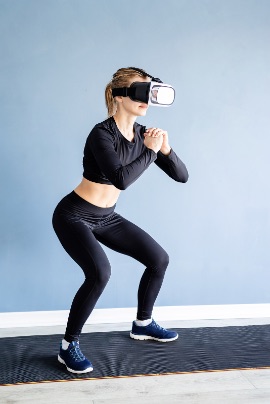 Vision training for sports is a research-based technique designed to help improve balance, eye-hand coordination, timing, positional, peripheral, and spatial awareness, depth perception, and reaction speed. More than 80% of sensory input is visual, which means the eyes play an important role in athletic performance, but this aspect of training is often overlooked. Accordingly, research shows that dynamic vision training which involves a concerted regimen for the eyes helps athletes and sports enthusiasts improve coordination skills and overall performance.
Vision training for sports is a research-based technique designed to help improve balance, eye-hand coordination, timing, positional, peripheral, and spatial awareness, depth perception, and reaction speed. More than 80% of sensory input is visual, which means the eyes play an important role in athletic performance, but this aspect of training is often overlooked. Accordingly, research shows that dynamic vision training which involves a concerted regimen for the eyes helps athletes and sports enthusiasts improve coordination skills and overall performance.
Sport vision training, which is also called vision therapy, may take place in an athletic facility, through online training programs, or by purchasing vision training equipment that can be used at home or while traveling. The training approach involves the use of different types of devices that consist of prisms and lenses which challenge the eyes to create vivid images. For instance, eyeglasses or goggles made with polarized materials and colored lenses are frequently used for vision training. The program also involves the use of software that incorporates activities for visual activity, hand-eye coordination, tracking, focusing, reaction time, and more.
Athletes who chose to train at a facility typically undergo a series of screenings and visual tests that help trainers assess an athlete’s strengths and weaknesses. Trainers use the results to develop a comprehensive vision training program that is specific to the player’s current level of performance and the skills they need to excel at the sport of choice.
The program typically focuses on one or more of the following athletic abilities to help athletes reach their highest potential:
- Eye tracking: maintaining focus on a target
- Peripheral awareness: seeing objects out of the corner of the eye
- Dynamic visual acuity: seeing objects clearly while they are in motion
- Focusing: shifting focus from one object to another clearly and quickly
- Hand-eye coordination: using the eyes to direct hand and body movements
- Depth perception: accurately and rapidly assessing the speed and distance of a target
- Balance: the ability to maintain body movement and stay upright
- Reaction time or speed: the speed at which an athlete can perceive and react to a visual event
- Contrast sensitivity: the ability to distinguish between an object and the background
Similar to physically training for a sport, vision training exercises typically start at an easy level and gradually increase in difficulty to improve the coordination and flexibility of the eye muscles. Furthermore, the use of specialized eyeglasses or goggles with highly advanced software creates an interactive routine, gives trainers immediate feedback, and lets both the trainer and the athlete track progress over time.
The apparatus that is placed over the eyes limits what players can see and forces them to use their optimal field of vision by limiting peripheral vision. This process maximizes hand-eye coordination, enhances visual tracking, and strengthens core muscle memory of the eyes. The training programs can last from several weeks to months or even up to one year. During training, athletes usually achieve better focus during a play, improve positional and spatial awareness faster, and react quicker.
Over the years, sports vision training has increased in popularity and is currently being used by athletes in the NFL, NCAA, MLB, and NHL, among others. Due to its success, sports vision training is a growing trend that is helping athletes gain a competitive edge over their opponents. Ask your physical therapist at Iron City Physical Therapy if vision training is right for you and available in your city.
References
1. Hutmacher F. Why Is There So Much More Research on Vision Than on Any Other Sensory Modality? Front Psychol. 2019; 10: 2246.
2. Liua S, et al. Dynamic vision training transfers positively to batting practice performance among collegiate baseball batters. Psychol Sport Exerc. 2020;51:101759.
3. Bressan ES. Effects of visual skills training, vision coaching and sports vision dynamics on the performance of a sport skill. Afr J Phys Health Educ Recreat Dance. 2003;99(1):20-31.
4. Sebastian Schwab S, Memmert D. The Impact of a Sports Vision Training Program in Youth Field Hockey Players. J Sports Sci Med. 2012;11(4):624-631.




